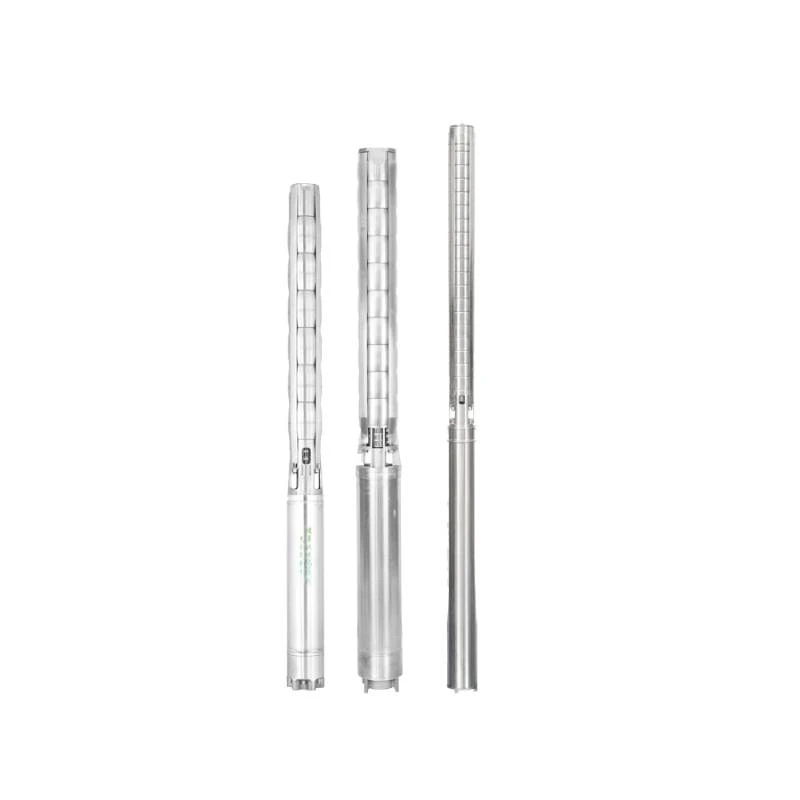10 月 . 18, 2024 14:24 Back to list
Efficient Deep Water Extraction with Advanced Submersible Well Pump Technology
Submersible Well Pumps An Overview
Submersible well pumps are essential devices used in various applications including agricultural irrigation, municipal water supply, and groundwater extraction. Unlike traditional surface pumps, submersible pumps operate underwater, making them highly efficient for drawing water from deep wells. This article will explore their functionality, applications, advantages, and maintenance considerations.
How Submersible Well Pumps Work
A submersible well pump consists of a hermetically sealed motor and a pump body, both designed to operate submerged in water. The pump is typically installed in deep wells, where it is placed beneath the water level. When the pump is activated, the motor drives an impeller that creates a difference in pressure, which pushes water up through the pump's discharge pipe and to the surface.
The design of submersible pumps allows them to be placed at significant depths, ranging from a few dozen to several hundred feet, depending on the well's depth and application needs. The motor is sealed to prevent water ingress, and it is powered by electricity, often using a power supply that runs through the well casing.
Applications of Submersible Well Pumps
Submersible well pumps are versatile and can be used in various settings
1. Agricultural Irrigation Farmers often employ submersible pumps to efficiently draw groundwater for irrigation, ensuring that crops receive adequate moisture, especially in arid regions. 2. Residential Water Systems Homeowners with private wells utilize submersible pumps to supply water for domestic use, including drinking, cooking, and sanitation.
3. Municipal Water Supply Many municipalities rely on submersible pumps for potable water distribution. These pumps can extract water from aquifers and deliver it to treatment facilities.
4. Industrial Uses Industries may use submersible pumps to manage water needs, such as cooling operations and process water supply.
Advantages of Submersible Well Pumps
Submersible well pumps offer several benefits over other pumping solutions
submersable well pump

- Efficiency They are highly efficient at converting energy into water movement, making them effective for deep well applications.
- Durability The sealed design protects against wear and tear from water, making them less susceptible to damage from environmental factors compared to surface pumps.
- Space-Saving Design Since the pump is submerged, it saves space on the surface, allowing for easier integration into existing systems.
- Reduced Noise Being underwater, these pumps operate more quietly than surface pumps, making them less intrusive in residential or commercial settings.
Maintenance Considerations
While submersible well pumps are robust and reliable, proper maintenance is vital for ensuring their longevity and performance. Here are some key maintenance tips
- Regular Inspections It’s essential to conduct periodic inspections to check for signs of wear, leaks, or mineral buildup that could affect pump efficiency.
- Electrical Checks Ensure the electrical connections are secure and that there are no signs of corrosion or damage to the wiring, which could lead to operational failures.
- Water Quality Testing Regularly test the water for contaminants that might affect the pump's functioning or the quality of the water supplied.
- Professional Servicing Engage qualified technicians for any necessary repairs or replacements, as attempting to service these pumps without proper knowledge can lead to further issues.
Conclusion
Submersible well pumps are vital components in modern water supply systems, providing efficient and reliable water extraction from deep wells. Their unique design and functionality allow them to serve a wide range of applications, from agriculture to urban water supplies. By understanding their operation, benefits, and maintenance needs, users can maximize their efficiency and extend their lifespan, ensuring a sustainable water supply for years to come.
-
Your Guide to Deep Well Pumps
NewsOct.31,2024
-
Why Choose a Stainless Steel Deep Well Pump?
NewsOct.31,2024
-
Understanding Water-Filled Submersible Pumps
NewsOct.31,2024
-
Understanding SS Submersible Pumps
NewsOct.31,2024
-
Reliable Submersible Well Pumps for Your Water Supply Needs
NewsOct.31,2024
-
Choosing the Right Submersible Pump for Your Water Management Needs
NewsOct.31,2024
-
 Understanding Water-Filled Submersible PumpsWhen it comes to selecting the right pump for your water management needs, understanding the different types available is crucial.Detail
Understanding Water-Filled Submersible PumpsWhen it comes to selecting the right pump for your water management needs, understanding the different types available is crucial.Detail -
 Guide to Installing a Deep Well Submersible PumpWhen dealing with deep wells, a deep well submersible pump is often the most effective solution for extracting water from significant depths.Detail
Guide to Installing a Deep Well Submersible PumpWhen dealing with deep wells, a deep well submersible pump is often the most effective solution for extracting water from significant depths.Detail -
 Finding the Right Submersible PumpWhen seeking an efficient solution for pumping water from deep wells, sumps, or other applications, the submersible pump is a leading choice.Detail
Finding the Right Submersible PumpWhen seeking an efficient solution for pumping water from deep wells, sumps, or other applications, the submersible pump is a leading choice.Detail
